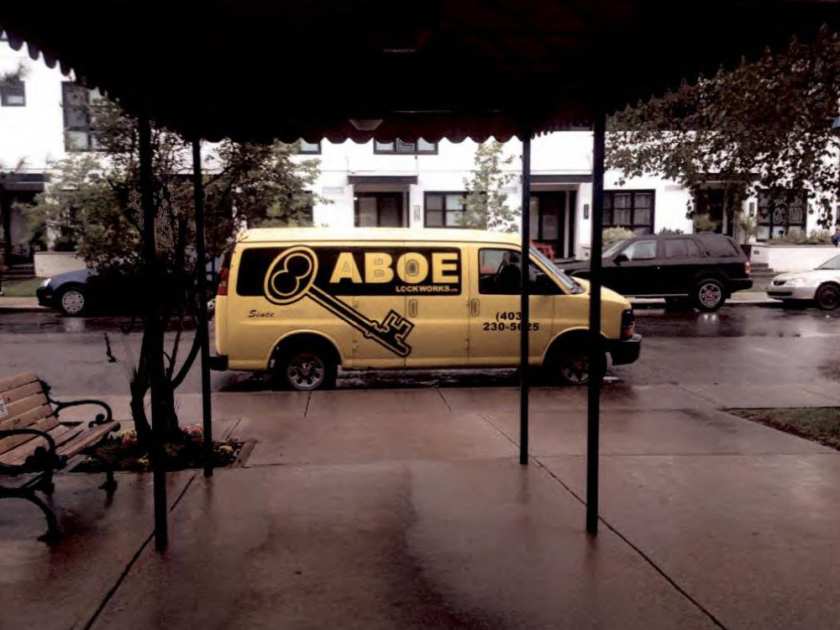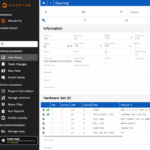A couple of news stories hit my desk this weekend, and I’d love to hear your thoughts…
~~~
First, a code inspector in Schenectady, New York has been indicted along with the building manager, in connection with a 2015 apartment fire that resulted in 4 fatalities. They are facing 4 charges of manslaughter as well as other charges. One factor in the fire was a non-functioning fire alarm system, but fire doors missing from the stairwells were all cited in the suit.
Code inspector, building manager indicted in fatal Jay Street Fire – The Daily Gazette

Photo: Daily Gazette
Sacks, 39, of Sanders Avenue, Scotia, is accused of failing to maintain the fire detection system at 104 Jay St. from Oct. 20, 2014, to the date of the fire, tampering with or disturbing the required detection and alarm system while the system was not being monitored and allowing the building to operate with no fire doors in hallway stairwells. The lack of fire doors allowed the fire to spread quickly upward from its fourth-floor origin, Carney said.
What do you think? Should the code inspector and building manager be held responsible? Will cases like this increase enforcement of the fire door assembly inspections required by the model codes and NFPA 80?
~~~
The second news report (thanks Ron Richter!) is about the need to rekey more than 7,000 affordable housing units because of a stolen locksmith van. Although the van was recovered, the equipment from inside the van was missing. If the person who has this equipment and the information that was in the van knows what they’re doing, they could cut keys and use them to access the apartments.
City has to change locks on up to 7,300 affordable housing units after locksmith van stolen – Calgary Herald

Photo: RCMP
The yellow and black ABOE Locksmith van was stolen outside an Airdrie apartment complex, and though the vehicle was quickly recovered Tuesday morning, officials learned equipment and information used to cut keys was missing, according to RCMP. “The equipment taken could allow someone to create keys for some CHC units,” Sarah Woodgate, president of Calgary Housing Company, said at a news conference Thursday.
How could this problem have been avoided? What do other housing authorities and similar types of facilities do to safeguard this information?
~~~
If you see a news story that might interest the readers of iDigHardware, send it along!
You need to login or register to bookmark/favorite this content.





I don’t think the fire marshal should be charged unless he actually fabricated a report or took a bribe. It’s a slippery slope here and the devil is in the details.
Regarding the van theft, were the pinning records and apartment numbers also in the van? If that’s the case, maybe it’s the locksmith’s problem. Either way, I wonder if the insurance company will pay.
What if the code inspector actually conducted the inspection, but failed to notice something as egregious as missing fire doors? One of the reasons I’ve heard regarding low enforcement of fire door inspections is that code officials feel like fire door inspectors are treading on their turf. But if they could be held liable for missing something, maybe it’s in their best interest to turn it over to an expert (with good liability insurance).
I don’t know exactly what information was in the stolen van, but it seems it would have to be the keying records, right? Without key records the stolen equipment won’t help much.
– Lori
Indeed the devil in the details showed up after I read the charges. Should have read the charges before i responded.
My only concern is who interprets what is egregious. Ultimately, it will be the jury. In this case, I agree. Burn the dude; but what if there was no loss of life… just property?
When does incompetence become a crime (there is a point, but where?). Could the fire inspector chief also be criminally charged if the guy under him/her was a total loser with a bad performance record?
I have personally witnessed somethings that need consideration. I conducted inspections of some fire/smoke dampers when they were installed in a building for which I had responsibility and as require verified their operation. Within 3 weeks, we had a State inspection and one of the damper drivers was stuck in the open position, definitely not something you want to happen. We re-inspected the other drivers and 3 our of 4, only weeks old were stuck open. We made a lot of noise about this and eventually the manufacturer acknowledged the situation. We were advised to test the dampers (over 200 in the building) “frequently”. I complained that if dampers were sticking open as frequently as every three weeks, we could not possible observe the action of 200+ dampers in time to prevent the problem. For picture purposes, we installed a small tack hammer next to one and a small label: “Strike damper in case of fire.” You could strike the damper and most of the time they would close. I personally sent this to UL, but that is another story.
People doing fire equipment inspection, particularly on doors in Hospitals, find deranged doors and hardware quite frequently that have been hit, bent or just plain fail for a multitude of reasons.
One time, I toured the entire facility the morning of an accreditation inspection and assured myself, all the exit lights were lighted. An hour later, we found one during the inspection that had been lighted an hour before close to the starting point of our tour!
Inspectors and building operators are not always just lazy or careless. People who want to criminalize problems need to evaluate the totality of the record and what they see in several inspections. In my experience they generally do this.
Having written that, the removal of stairwell doors (along with propping them open with wooden wedges tells me they don’t have a clue about fire safety. Even one case of this would be enough for me to recommend severe punishment.
I just love your stories! 😀
– Lori
With regards to the stolen van, I think keying records need to be kept in a secure format; preferably an encrypted file. At the minimum paper records should be kept in a locked filing cabinet, and shredded when no longer needed. It’s irresponsible to leave this information in a location/format that can easily be stolen.
Agreed Michael Pederson!
Two thoughts:
1. Cost. The cost to do it right is cheap compared with the cost of fixing the problem. Almost always; It is what happened, Before what happened happened, that is the real problem.
“Once that’s all done, we have to have a big conversation about policy, procedure, process and how we can avoid this sort of thing in the future.”
2. Procedures. The best practice for key records would involve blind codes for buildings, rooms, keyways and NOT having ALL of the housing departments information in one place at one time. I understand it is easier, but just not as safe.
I don’t want to see an inspector get hit with this, but if he didn’t do his job, he is liable. His records will either save or bury him. Hopefully he did document the violations but the owner ignored him. If not, the jury will hang him. The owner can cry ignorance, but will still probably get hit. This is a no win for anyone.
I used to carry a laptop computer in my van to do many large systems. I kept the matrix for each of the systems on a thumb drive in my pocket. The files are encrypted and password protected on the drive and identified by a blind code name without the name and address of the owner. The computer only had to read excel files and room number lists. I never left paper files in my van. I then backed up my master files at the end of the day. Never leave yourself open to loss from stupidity.
Great insight – thanks Rich!
– Lori
Good practice on the key systems records Rich!
There are plenty of details missing from the story to prevent any firm opinion. The inspector says the systems were operation at the time of inspection. No mention of when the inspection was performed or how much time transpired between the inspection and the fire. An inspection only means that the system was operational at the time of the inspection. Unless there is some credible evidence suggesting the inspector falsified his report what grounds do they have to charge him?
It can be difficult to ensure that buildings are secure, particularly when the folks occupying the building are unaware or uncaring of the risks. A few years ago one of the schools in our district had a kidnapping threat. The staff in the school were fully aware of this. My partner and I were dispatched to check the security at the school. When we arrived we found the majority of the exterior doors were propped in one way or another. Some had wedges, others had earthquake bags holding the doors and others were tied back with string. It was a hot late spring day, but we went around the school, checked the function of the locks and secured all of the doors, pocketing wedges, removing bags, and cutting off string. Imagine our surprise when we got back to our starting point and found most of the doors propped open again. As it isn’t our job to educate the educated (teachers) we reported our findings to the Principal and beat a retreat. All we can do is give them the tools to protect themselves. It is up to them to use them.
Argh! So frustrating!
– Lori
up to the edumacation edumacators to kill the kids through edumanegligence
As we all know; convenience is the opposite of security.